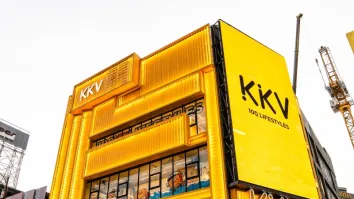Macroeconomic uncertainty remains biggest challenge for retailers
The retail sector has been undergoing a significant transformation, particularly in the Asian markets where stores are integrating innovative designs and technology-driven features.
Uncertainty in the macro environment tops the challenges that retail companies face today, according to Scott Price, Chief Executive Officer of DFI Retail Group.
Price said that the post-COVID world has seen consumers pivoting towards value, driven by uncertainties surrounding salaries and the overall economic health of their markets.
“You know, we have gone through a lot during COVID and then post COVID period. What we're seeing across our markets, certainly across our formats, is our customers are pivoting towards value. There is uncertainty in terms of just salary, the economic health of the markets in which they live,” he said.
Price mentioned the company's initiatives to keep pace with the evolving retail landscape and acknowledged the company's growing focus on ESG (environmental, social, governance) over traditional CSR.
“Making sure that we are putting forward there through our assortment, through our promotions and through our overall customer proposition. A pretty strong value message that is in line with what we see many many customers around the region are quite concerned with these days,” he said.
Their environmental initiatives revolve around reducing carbon footprints, not just from their direct operations (scope one and two) but also from the products they sell (scope three). On the social front, the company is committed to giving back to communities and ensuring their stores are community-centric, while governance initiatives aim to align with global best practices.
“We recently just heard from one of the larger rating groups, Morningstar, that our rating of global retailers, they track 120, we had moved up to number 35, which I think is a reflection of all the effort that the team had been making,” he said.
Discussing the trend of physical store revamps, Price highlighted the operational side of the stores incorporating features like electronic shelf labels and screens to enhance customer experience, adding that in connecting the in-store experience with the online one, the company ensures that customers can access a broader assortment of products even if the physical store has limited stock.
“How do you have the ability through QR codes and other digital mechanisms to be able to trigger the customer that they can go online, explore more of an assortment and order it from you, creating therefore a much bigger assortment that's available. So those digital, I think aspects, are pretty important moving forward for brick and mortar retailers,” he explained.



















 Advertise
Advertise





